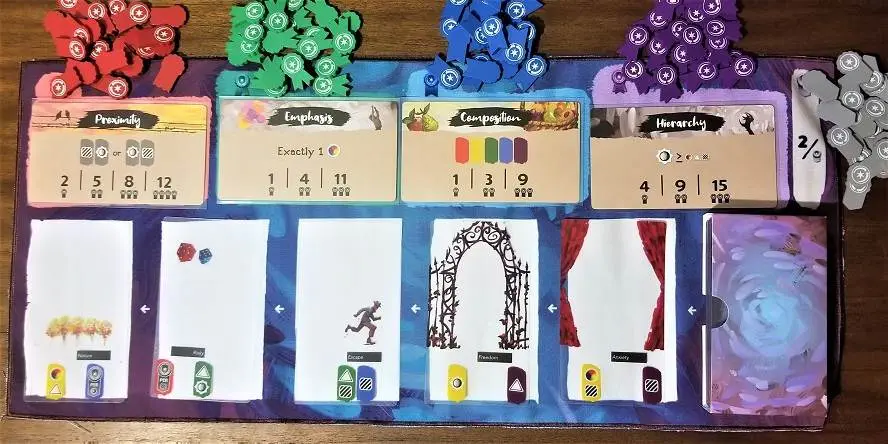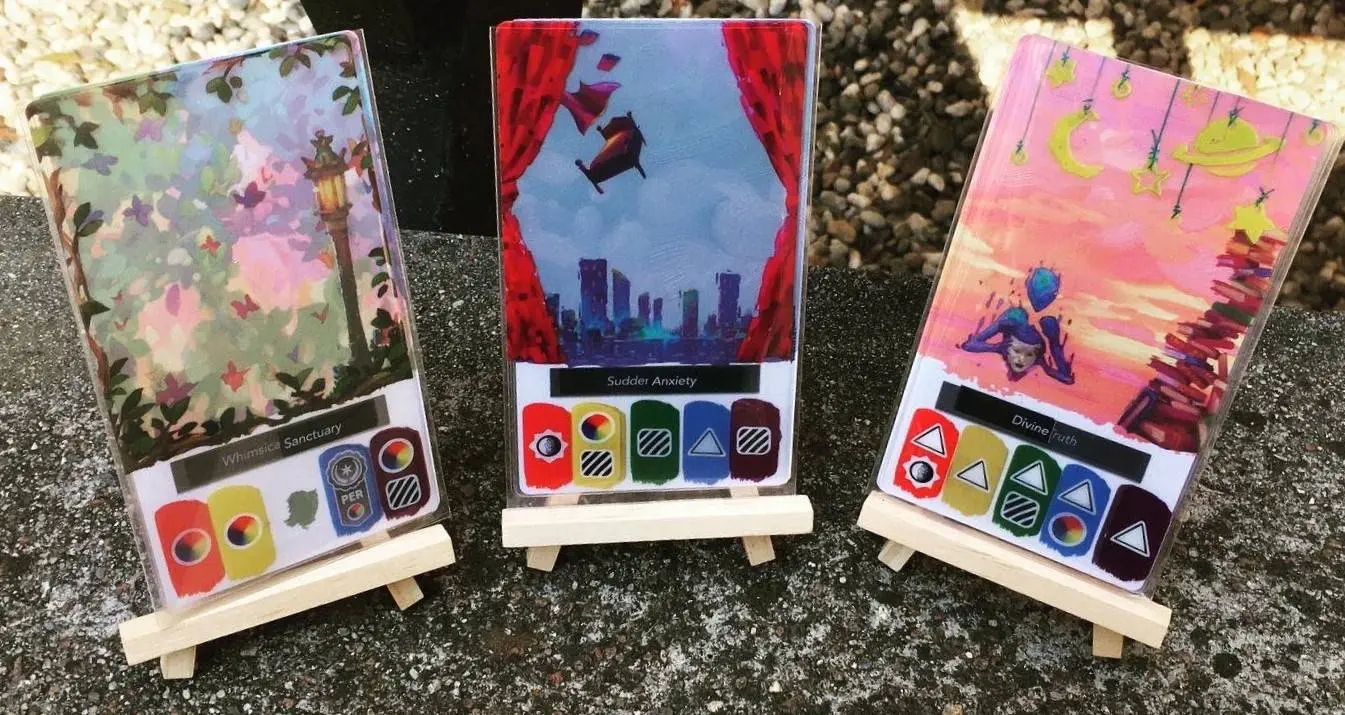
Canvas is the newest game from Road To Infamy Games (a.k.a. R2i Games) in which players will be competing at an art festival to create works of art based on specific criteria. This 1-5 player card game was designed by Jeffrey Chin and Andrew Nerger. They’ve also brought forth such titles as Cosmocracy, Afternova, and, one of my personal favorites, Crypt. Chin also did the graphic design work for the game. All of the breathtakingly beautiful illustrations were provided by Luan Huynh. Canvas came to life as a Kickstarter campaign in April of 2020 where it raised almost 51 times its funding goal. The game took less than 9 months to fulfill and find its way into the hands of its backers. The game’s playtime is stated as being 30 minutes and, after just a game or two, we found that to be pretty accurate. For this review, we are using our personal Kickstarter rewards, which include the deluxe components and mini-expansion.

The included play mat for Canvas makes setting up a breeze! Once the mat is unrolled, it is easy to see where most components should be placed. Each game uses four scoring cards, which are placed in the top row of the mat. The ribbon tokens are placed by color next to their corresponding icon. Shuffle the art cards and place them in the included deck box, which is then placed in the deck space. Five of these cards are then dealt face up to the open spaces to the left of the deck box. Players will then receive three sleeved background cards and four inspiration tokens. To begin play, the person who most recently painted will begin their turn.
When taking a turn, players will either take an art card or complete a painting. As long as a player has less than five cards in their hand, they can take an art card from the row of cards on the mat. If a player chooses the far left card, they may simply take it into their hand. Should they desire a different card, however, the player will need to place an inspiration token on each card to the left of the card they want. Any inspiration on a chosen card will become part of that player’s pool. Once players have at least three art cards, they can choose to complete a painting. Art cards are layered in any order and placed inside the card sleeve over the background card. However, it is important to note that only the visible icons will be scored. Ribbons are earned as soon as a painting is completed by checking the painting against the scoring conditions. Play continues in this manner until all players have completed their three paintings. Final scoring is tallied based on the total ribbons earned of each type as designated by the score card. The player with the most points wins.
My first introduction to Canvas was actually from randomly browsing Kickstarter and stumbling across the campaign on its launch day. With the creative use of the clear plastic cards mixed with Luan Huynh’s artwork, I knew this was a project I was going to instantly support. Upon receiving my Kickstarter rewards and having played Canvas several times now, I am delighted that it is as puzzle-y as it is, yet manages to keep its elegant simplicity. Within this gorgeous box is a lot to unpack (both literally and figuratively)! Due to the sheer number of art cards, scoring cards, and award cards included with the Kickstarter exclusive mini-expansion, there is a lot of replayability to the game. In fact, there are even several scenarios and solo variants included in the rulebook! The multiple aspects of game play integrate together what would otherwise be basic concepts, yet combined create a game that is both simple and challenging. As the composition requirements change from game to game, Canvas will continue to offer up new challenges each time it is brought to the table.
All Road To Infamy Games product photos were taken and edited by Krista. They may be clicked on to be enlarged.
